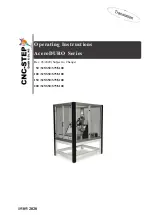
4 TECHNOLOGIES
4.1 xDSL technology, background
xDSL technology appeared due to the growing user’s demand to high-speed digital stream
transfer over telephone copper pairs. Operators had to organize the interconnection of backbone
stations of cellular networks, Digital Loop Carrier systems, interstation connection and to provide
high-speed Internet access at minimal expenses. In these circumstances, it was reasonable to
use the existing telephone cables. The new technology acquired the name – xDSL (Digital
Subscriber Line).
“x” key
x is a variable in the DSL technology, where every word has its own meaning. Thus the term
“Digital” means, that not an analogue but digital signal, that was processed by one of line
encoding methods, is transmitted over pairs. In fact, the term xDSL points at this or that line code
the distance of data transfer and maximal connection speed depend on it. However, some
technologies, for example ADSL, can use one of the two line codes: either Discrete Multi-Tone
(DMT) or Carrierless Amplitude/Phase (CAP).
The term “Subscriber Line” is referred to physical copper pairs of telephone cable, or in simple
words, to “direct wires”. The term DSL was originally referred to the ISDN technology, but later
was borrowed by the developers of xDSL technologies.
4.1.1 Asymmetric DSL (ADSL) technology
The most popular DSL technology, ADSL, was developed in Bellcore laboratory in late 1980s.
Standards Institutes assigned the use of carrier set modulation, which acquired the name DMT,
to ADSL, while another leading method received the name of Rate-Adaptive DSL (RADSL).
ADSL transmits downstream to the end user and upstream to the net. The ADSL technology
does not use 25–30-kHz frequencies, used for a subscriber’s access to public switched telephone
network (PSTN). This provides simultaneous subscriber’s access to data transfer networks and
PSTN over the same copper pair. The original ADSL implies the presence of splitters both on
LTU and NTU. However, ADSL without splitters found its use and acquired the name of ADSL
Lite or G.lite. Later, it was standardized by ITU-T. This standard supports downstream speeds up
to 1.5 Mbit/s and upstream speeds up to 512 Kbit/s.
4.1.1.1 ADSL in brief
Standard
•
G.lite G.992.1 (G.DMT)
•
T1 413-1998
•
Interoperability between equipment of different manufacturers
Version: 1.0
Page. 9 of 95
Содержание MDS920C-10BT
Страница 37: ...Fig 16 MDS920C 10BT NG front panel Version 1 0 Page 37 of 95...
Страница 39: ...Fig 17 MDS922AE 10BT front panel Version 1 0 Page 39 of 95...
Страница 45: ...Version 1 0 Page 45 of 95 Fig 19 Command tree of bridge mode...
Страница 46: ...Fig 20 Command tree of router mode Version 1 0 Page 46 of 95...










































